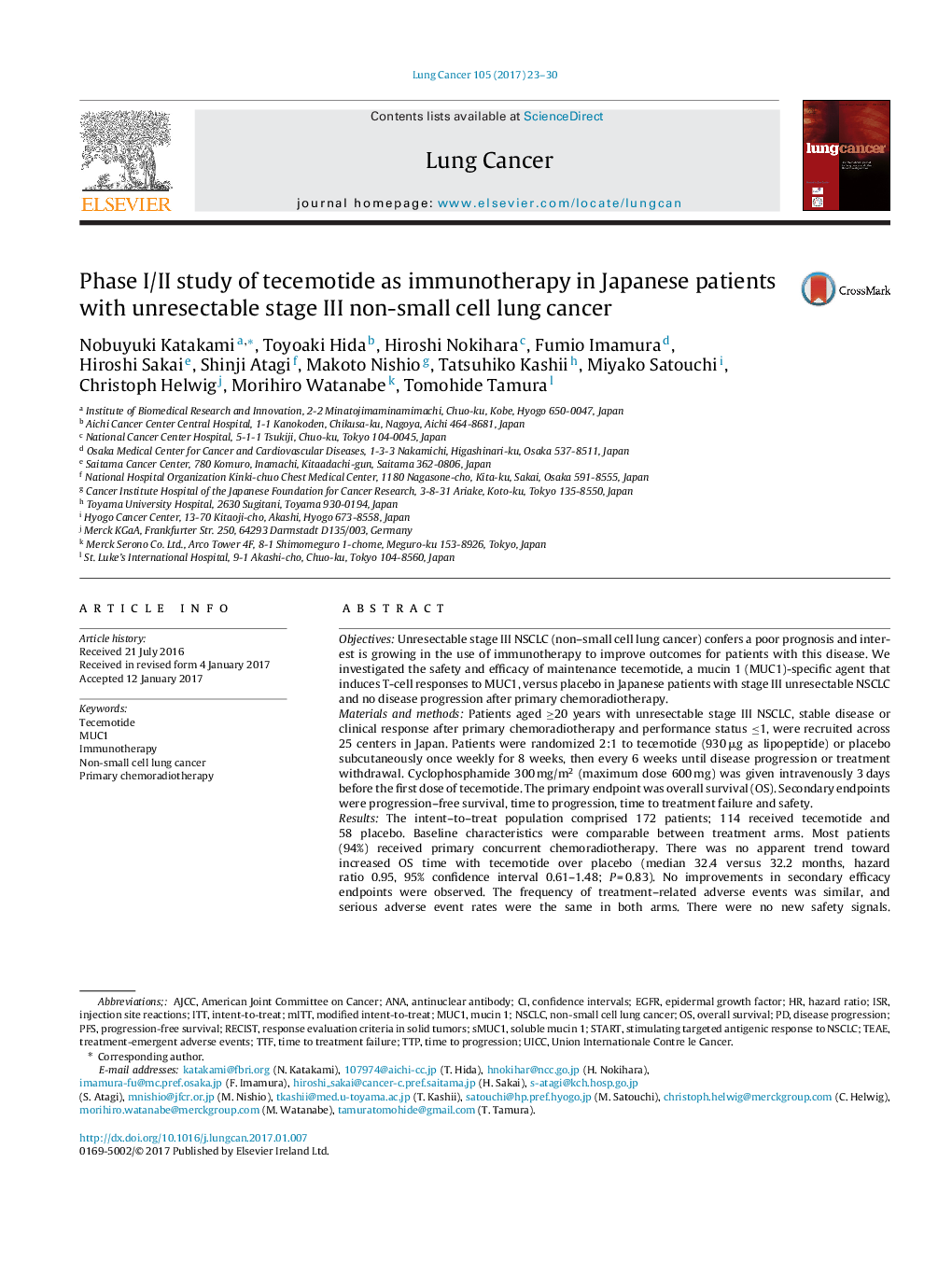| Article ID | Journal | Published Year | Pages | File Type |
|---|---|---|---|---|
| 5528428 | Lung Cancer | 2017 | 8 Pages |
â¢Study of tecemotide in Japanese NSCLC patients after chemoradiotherapy (CRT).â¢No increase in OS with tecemotide versus placebo.â¢Unlike START trial, no OS increase in patient subgroup receiving concurrent CRT.â¢No benefit on PFS, TTP or TTF with tecemotide versus placebo.â¢Similar frequency of adverse events between study arms; no new safety signals.
ObjectivesUnresectable stage III NSCLC (non-small cell lung cancer) confers a poor prognosis and interest is growing in the use of immunotherapy to improve outcomes for patients with this disease. We investigated the safety and efficacy of maintenance tecemotide, a mucin 1 (MUC1)-specific agent that induces T-cell responses to MUC1, versus placebo in Japanese patients with stage III unresectable NSCLC and no disease progression after primary chemoradiotherapy.Materials and methodsPatients aged â¥20 years with unresectable stage III NSCLC, stable disease or clinical response after primary chemoradiotherapy and performance status â¤1, were recruited across 25 centers in Japan. Patients were randomized 2:1 to tecemotide (930 μg as lipopeptide) or placebo subcutaneously once weekly for 8 weeks, then every 6 weeks until disease progression or treatment withdrawal. Cyclophosphamide 300 mg/m2 (maximum dose 600 mg) was given intravenously 3 days before the first dose of tecemotide. The primary endpoint was overall survival (OS). Secondary endpoints were progression-free survival, time to progression, time to treatment failure and safety.ResultsThe intent-to-treat population comprised 172 patients; 114 received tecemotide and 58 placebo. Baseline characteristics were comparable between treatment arms. Most patients (94%) received primary concurrent chemoradiotherapy. There was no apparent trend toward increased OS time with tecemotide over placebo (median 32.4 versus 32.2 months, hazard ratio 0.95, 95% confidence interval 0.61-1.48; P = 0.83). No improvements in secondary efficacy endpoints were observed. The frequency of treatment-related adverse events was similar, and serious adverse event rates were the same in both arms. There were no new safety signals.ConclusionsThese results do not support those from a randomized phase III study (START) of improved OS with tecemotide in the subgroup of patients treated with primary concurrent chemoradiotherapy.
